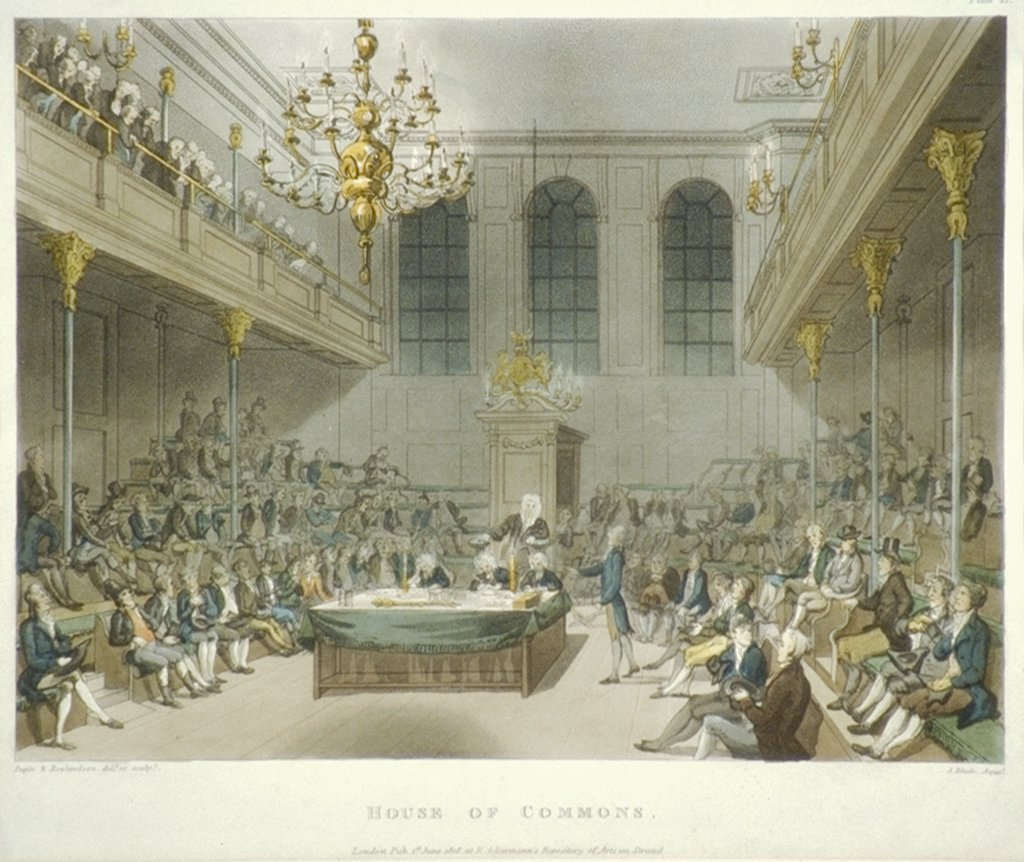House of Commons
Thomas Rowlandson (1756 - 1827)
Auguste Charles Pugin (1762 - 1832)
John Bluck
Colour aquatint
published 1 June 1808
-
About the work
- Location
-
Country: Austria
City: Vienna
Place: UK Delegation to Organisation for Security and Co-operation in Europe (OSCE)
-
About the artist
Thomas Rowlandson was born in London, the son of a bankrupt wool and silk merchant. He studied at the Royal Academy Schools, making a trip to Paris during his time there, and won the silver medal in 1777. During the next two decades he made several continental tours, visiting France, Italy, Germany and Holland, as well as travelling extensively in England and Wales. He exhibited from 1775 to 1787 and, in 1789, received a legacy from an aunt, which he is said to have gambled away. From 1798, much of his work was for Rudolf Ackermann, most notably his illustrations for the three Tours of Dr Syntax (published 1812, 1820, and 1821) and The Microcosm of London (1808–10). He revisited France in 1814 and Italy in about 1820. Rowland continued to work almost until the end of his life. He is most famous as a caricaturist, but his work also included figure studies, portraits, marine subjects and landscapes.
Augustus Charles Pugin fled to England in the 1790s, either because of his Royalism or on account of a duel. He seems to have landed in Wales, where he became a friend of the architect John Nash (1752–1835). He worked as a general artist, providing designs for Nash and painting scenery, before moving to London and studying at the Royal Academy Schools. He first exhibited architectural designs at the Academy in 1799 and, from 1807, began to exhibit at the Old Watercolour Society. Pugin worked on several projects for Rudolf Ackermann, including plates for The Microcosm of London and The Abbey Church of Westminster (1811–12). During this period he set up a school of architectural drawing and began to publish his own works. He was the father of A. W. N. Pugin, who designed the interiors of the Houses of Parliament.
John Bluck was an aquatint engraver, mainly of topographical views, but also of marine and sporting subjects after his contemporaries. He produced plates for numerous publications.
-
Explore
- Places
- Subjects
- Materials & Techniques
-
Details
- Title
- House of Commons
- Date
- published 1 June 1808
- Medium
- Colour aquatint
- Acquisition
- Origin uncertain
- GAC number
- 12024